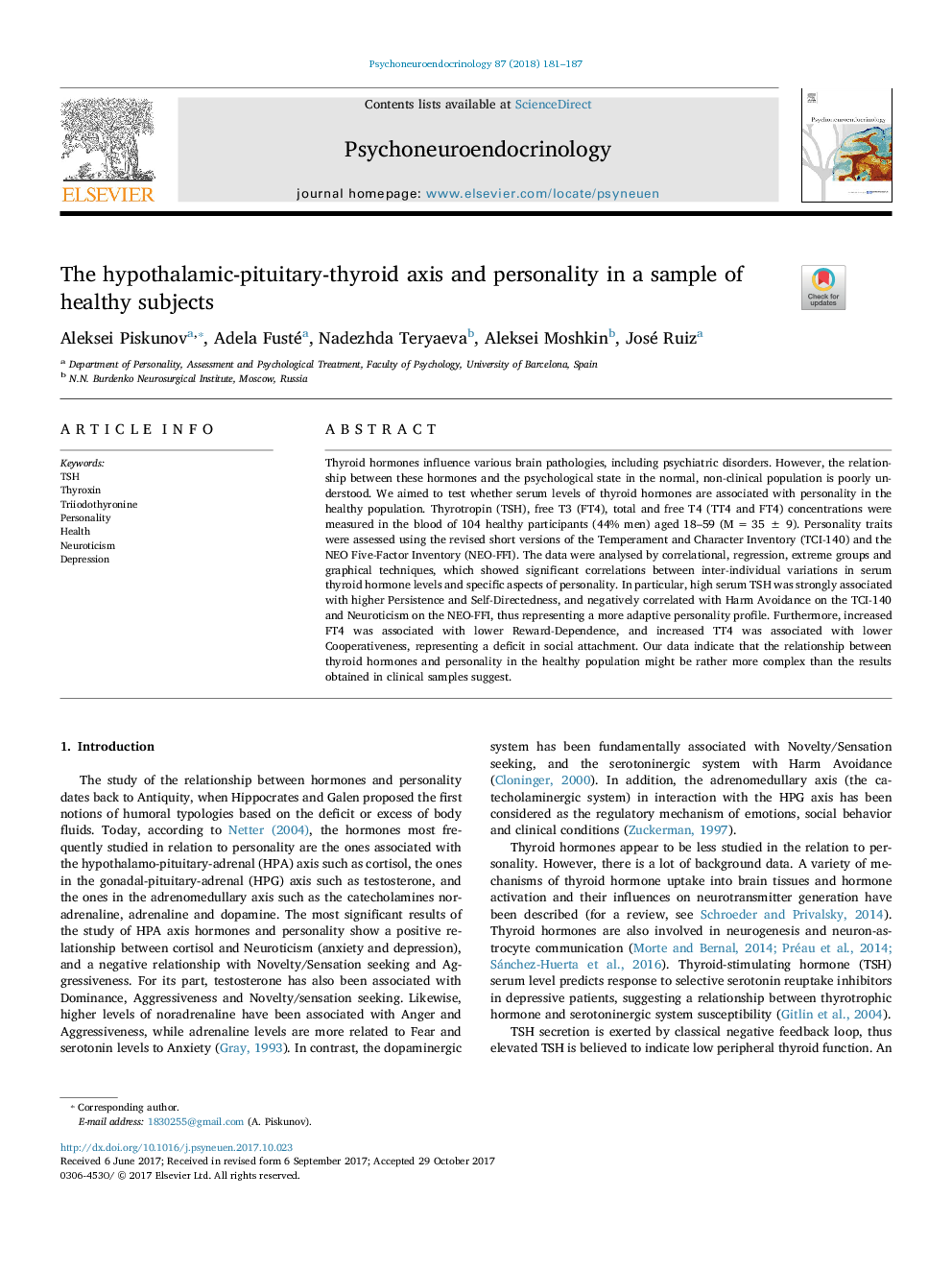ترجمه فارسی عنوان مقاله
محور هیپوتالاموس - هیپوفیز - تیروئید و شخصیت در یک نمونه از افراد سالم
عنوان انگلیسی
The hypothalamic-pituitary-thyroid axis and personality in a sample of healthy subjects
| کد مقاله | سال انتشار | تعداد صفحات مقاله انگلیسی |
|---|---|---|
| 125593 | 2018 | 7 صفحه PDF |
منبع

Publisher : Elsevier - Science Direct (الزویر - ساینس دایرکت)
Journal : Psychoneuroendocrinology, Volume 87, January 2018, Pages 181-187

